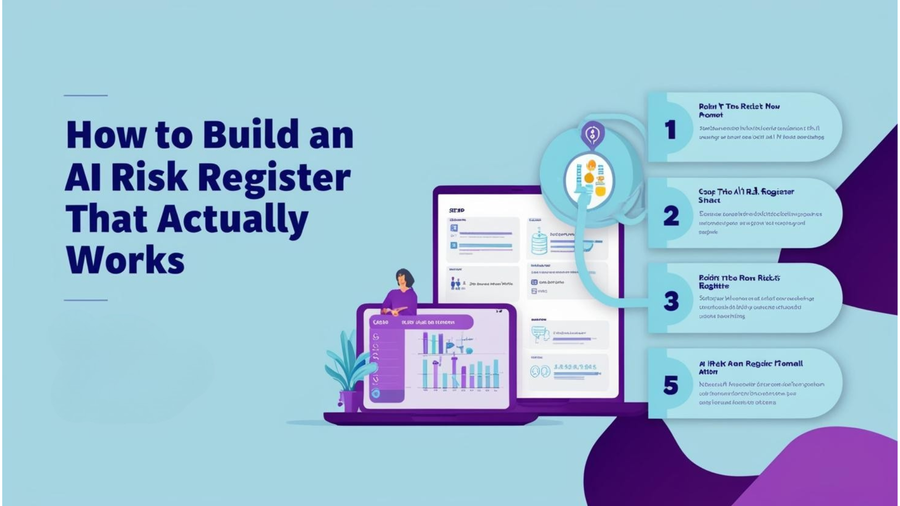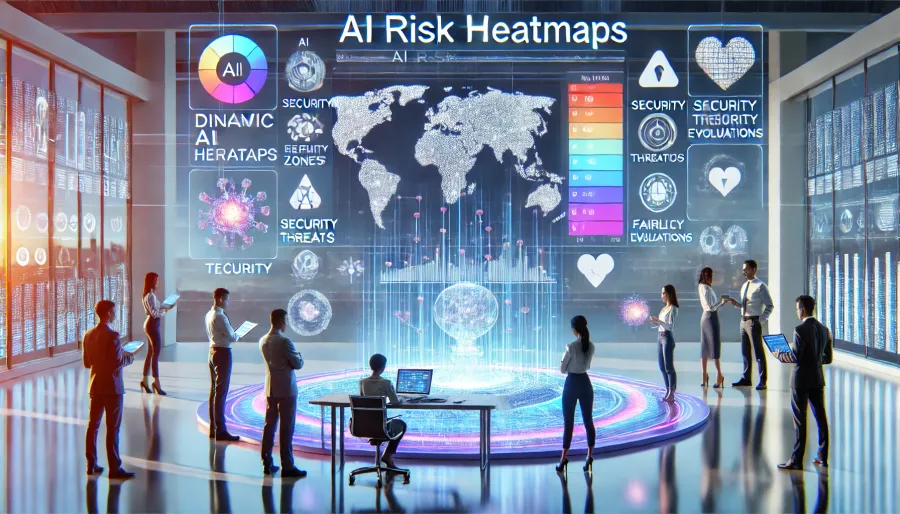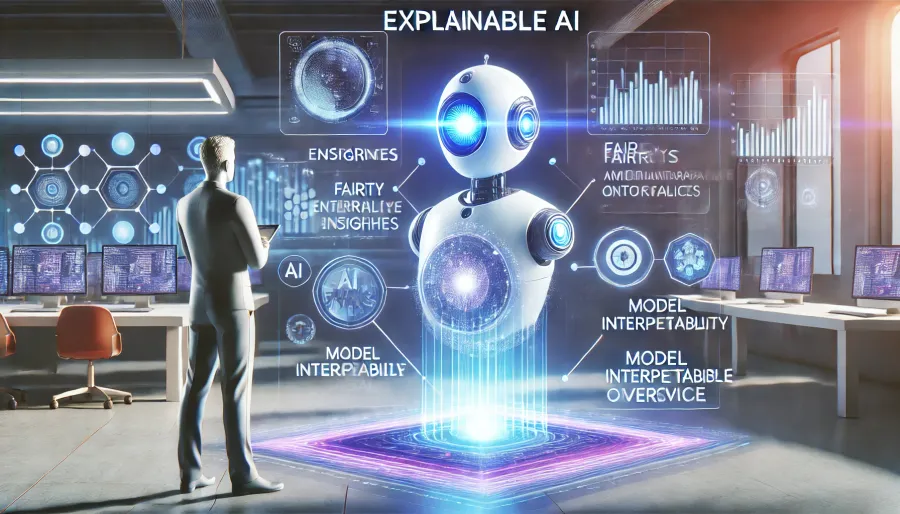AI’s Potential vs. Its Risks: Why Guardrails Matter
AI is transforming industries—automating processes, enhancing decision-making, and personalizing customer experiences. However, unchecked AI can also introduce bias, ethical concerns, security vulnerabilities, and regulatory risks. With global AI regulations tightening, enterprises must implement AI guardrails to ensure AI is used responsibly, fairly, and transparently.
From automated hiring tools accused of discrimination to deepfake technologies spreading misinformation, the need for AI governance has never been more urgent. How can businesses strike the right balance between AI innovation and ethical responsibility? This guide explores practical steps to build AI guardrails that align with NIST AI RMF, EU AI Act, and ISO 42001 standards.
1. What Are AI Guardrails?
AI guardrails are policies, frameworks, and technical mechanisms designed to ensure AI systems operate ethically, safely, and within legal boundaries. These guardrails help prevent bias, security threats, and unintended AI consequences.
Types of AI Guardrails
🔹 Ethical Guardrails – Ensure AI aligns with fairness, transparency, and accountability principles.
🔹 Regulatory Guardrails – Help businesses comply with laws like GDPR, CCPA, and the EU AI Act.
🔹 Technical Guardrails – Include bias detection tools, explainability models, and monitoring systems.
🔹 Operational Guardrails – Define AI governance processes, human oversight mechanisms, and risk mitigation strategies.
🔹 Example: Microsoft integrates AI guardrails in its Azure AI services by offering built-in fairness, explainability, and monitoring tools to help enterprises deploy responsible AI.
2. The Risks of AI Without Guardrails
Without proper AI governance, businesses face risks such as:
🚨 Bias & Discrimination – AI models trained on biased data can lead to discriminatory hiring, lending, or medical decisions.
🚨 Lack of Transparency – Black-box AI models make decisions that are difficult to explain, leading to regulatory non-compliance.
🚨 Security Vulnerabilities – AI is susceptible to adversarial attacks, data poisoning, and privacy breaches.
🚨 Regulatory Penalties – Non-compliance with AI laws like the EU AI Act can result in fines of up to 6% of global revenue.
🔹 Real-World Case Study: In 2021, a major bank’s AI-driven credit scoring system was found to offer lower credit limits to women compared to men, sparking public backlash and regulatory scrutiny.
3. How to Build Effective AI Guardrails
Step 1: Establish Ethical AI Principles
Start by defining clear ethical AI guidelines aligned with industry standards: ✅ Fairness & Bias Mitigation – Ensure AI treats all users equitably.
✅ Transparency & Explainability – Use Explainable AI (XAI) to clarify AI-driven decisions.
✅ Privacy & Security – Protect data with encryption and privacy-preserving AI techniques.
✅ Accountability & Human Oversight – Assign AI governance roles to ensure accountability.
🔹 Example: Google’s AI Principles emphasize fairness, transparency, and privacy as part of its AI governance strategy.
Step 2: Implement AI Risk Management Frameworks
Adopt AI governance frameworks such as: ✅ NIST AI Risk Management Framework (AI RMF) – Provides a structured approach to AI risk management.
✅ EU AI Act Compliance Guidelines – Classifies AI systems by risk level and mandates transparency for high-risk AI.
✅ ISO 42001 AI Governance Standard – A global standard for AI management and governance.
🔹 Example: Financial institutions use AI RMF guidelines to assess AI-driven lending systems for compliance and fairness.
Step 3: Use AI Monitoring & Bias Detection Tools
AI models must be continuously monitored to prevent unintended consequences: ✅ Bias Detection & Fairness Audits – Tools like IBM AI Fairness 360 detect and mitigate bias in AI models.
✅ AI Explainability Models – LIME & SHAP help interpret AI decisions for transparency.
✅ AI Drift Detection – Continuously monitor AI model performance to prevent data drift and unintended biases.
🔹 Example: The healthcare industry uses Explainable AI (XAI) in AI-driven diagnostics to ensure doctors understand AI-recommended treatments.
Step 4: Implement Human Oversight & AI Review Processes
AI should not operate in isolation—human oversight is critical: ✅ Human-in-the-Loop (HITL) AI – Requires human validation for AI-generated high-stakes decisions.
✅ AI Incident Response Mechanisms – Establish a process for AI-related complaints and corrections.
✅ AI Ethics Committees – Form an AI Ethics Board to oversee AI deployment and ethical concerns.
🔹 Example: The European Commission mandates human oversight for AI in criminal justice, finance, and healthcare to prevent wrongful decisions.
Step 5: Ensure Compliance with AI Regulations
AI guardrails should align with regulatory requirements to avoid penalties: ✅ GDPR & CCPA Compliance – Ensure AI systems handle personal data ethically.
✅ EU AI Act Risk Classification – Categorize AI models as minimal, limited, high, or unacceptable risk.
✅ Automated Compliance Monitoring – Use AI-powered compliance tools to track adherence to AI laws.
🔹 Example: AI-powered hiring tools must comply with EEOC (Equal Employment Opportunity Commission) guidelines to prevent discrimination.
4. The Future of AI Guardrails
AI guardrails will evolve as AI technologies and regulations continue to advance: 🔹 Stronger AI Regulations – Expect increased enforcement of the EU AI Act & global AI laws.
🔹 AI Governance Automation – AI-driven tools will automate compliance and ethical monitoring.
🔹 Explainability by Default – Future AI systems will be designed with built-in transparency mechanisms.
🔹 Real-Time AI Auditing – AI governance will shift towards continuous monitoring and auditing.
🔹 Example: The U.S. National AI Advisory Committee (NAIAC) is pushing for stronger AI guardrails to prevent misuse of generative AI and deepfakes.
Final Thoughts: AI Guardrails Are Essential for Responsible AI
AI has the power to revolutionize industries, but without proper governance, it can lead to bias, security threats, and legal risks. By implementing ethical principles, risk management frameworks, bias detection tools, and human oversight, enterprises can build strong AI guardrails that ensure responsible AI use.
The future of AI belongs to businesses that embrace transparent, fair, and accountable AI governance.






